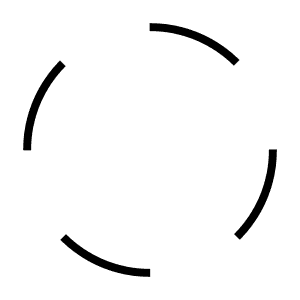
In house label for Cafe OTO which documents the venue's programme of experimental and new music, alongside re-issuing crucial archival releases.
Totally beautiful and rare piano performance from Loren Connors, joined on guitar by long time collaborator Alan Licht. Celebrating thirty years of collaboration, Loren Connors and Alan Licht performed for two nights at OTO on May 5 and 6th, 2023. On the second night, with the stage lit in blue, Connors took up a seat on the piano stool whilst Licht picked up the guitar. What followed was the duo’s first ever set with Connors on piano - one of only a few times Connors has played piano live at all - here captured and issued as The Blue Hour. Its spacious warmth came as a total surprise live, but makes complete sense for a duo whose dedicated expressionism takes inspiration from a vast spectrum of emotion. Both opening with single notes to start, it doesn't take long before a surface rises and begins to shimmer. A run up the keys, the drop of a feedback layer on a sustained and bent note. The two begin to exchange notes in tandem and brief touches of melody and chord hover. After a while, Connors picks up the guitar, stands it in his lap and sweeps a wash of colour across Licht’s guitar. Sharp, glassy edges begin to form, open strings and barred frets darkening the space. When his two pedals begin to merge, Licht finds a dramatic organ-like feedback and it’s hard not to imagine Rothko’s Chapel, its varying shades of blue black ascending and descending in the room. When Connors goes back to the piano for the second side, the pair quickly lock into a refrain and light pours in. It’s a kind of sound that Licht says reminds him of what he and Connors would do when the duo first started playing together 30 years ago. It’s certainly more melodic than some of their more recent shows, and the atonal shards of At The Top of the Stairs seem to totally dissolve. What is always remarkable about Licht is that his enormous frame of reference doesn't seem to weigh him down, and instead here he is able to delicately place fractures of a Jackson C Frank song (“Just Like Anything”,) amongst the vast sea of Connors’ blues. Perhaps it's the pleasure of playing two nights in a row together, or the nature of Connor’s piano playing combined with Licht’s careful listening, but the improvisation on The Blue Hour feels remarkably calm and unafraid. There’s nothing to prove and no agenda except the joy of sounding colour together. Totally beautiful. --- Recorded live at Cafe OTO on Saturday 6th May 2023 by Billy SteigerMixed by Oli BarrettMastered by Sean McCannArtwork by Loren Connors Layout by Oli BarrettScreenprint by Tartaruga Manufactured in the UK by Vinyl Press. Edition of 300 standard LPs, 100 LPs with screenprinted artwork by Loren Connors printed as inserts. Also available on a limted run of 200 CDs.

Loren Connors & Alan Licht – The Blue Hour
Our new in house label, releasing music recorded in lockdown.
"A classically trained Chinese bamboo flutist, Lao Dan picked up the saxophone again around 2013 as he went wildly astray in the world of avant-garde jazz and free improvisation. While demonstrating an ever-growing ability to deliver explosive force and intensity in his free playing, Lao Dan keeps a brutal honesty in his approach to the instrument. He plays ‘jazz’ as what it is, not what it’s supposed to be. Navigating constantly between the East and the West, Lao Dan embraces a unique aesthetics which fuses all his past influences into a voice of glorious mayhem and sheer zaniness.Recorded in June 2019, this is a solo set in which two instruments – tenor saxophone and Zheng, also known as the Chinese zither – were played successively and simultaneously by hands and feet. The recording was made in one go with no overdub or effect added. Lao Dan never learned to play the Zheng properly before this very first attempt. As a result, he didn’t struggle at all to play it in an awkward way, while with the saxophone he did, as always, try very hard to do that.The cover art, created by Shenzhen-based artist Tiemei, is a portrait of Shennong, the Deity of medicine and agriculture in ancient Chinese mythology. The three tracks in Chinese Medicine are named after three species of herb each believed to have unique medicinal properties. It is our responsibility to remind you to take them with extra caution. In Chinese medicine, after all, every drug is a thirty-percent poison."

Lao Dan – Chinese Medicine
Recording of Otomo Yoshihide's set at B10 Live, Shenzhen. --- 大友良英 Otomo Yoshihide / 吉他 Guitar / 人声 Vocals --- 录制于2014年4月28日,深圳B10现场. Recorded April 28, 2014 at B10 Live, Shenzhen

Otomo Yoshihide – Otomo Yoshihide Live in Shenzen




























































